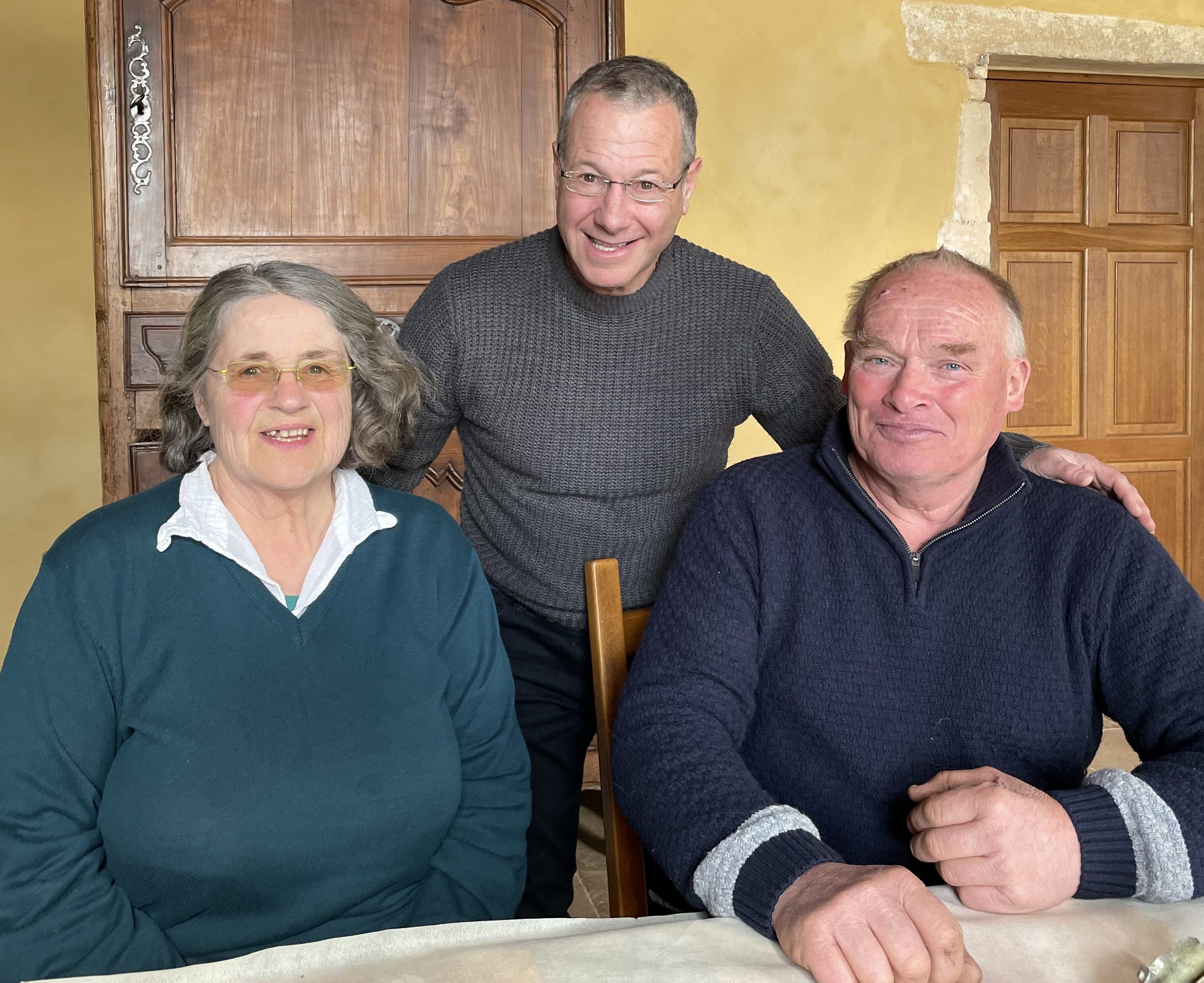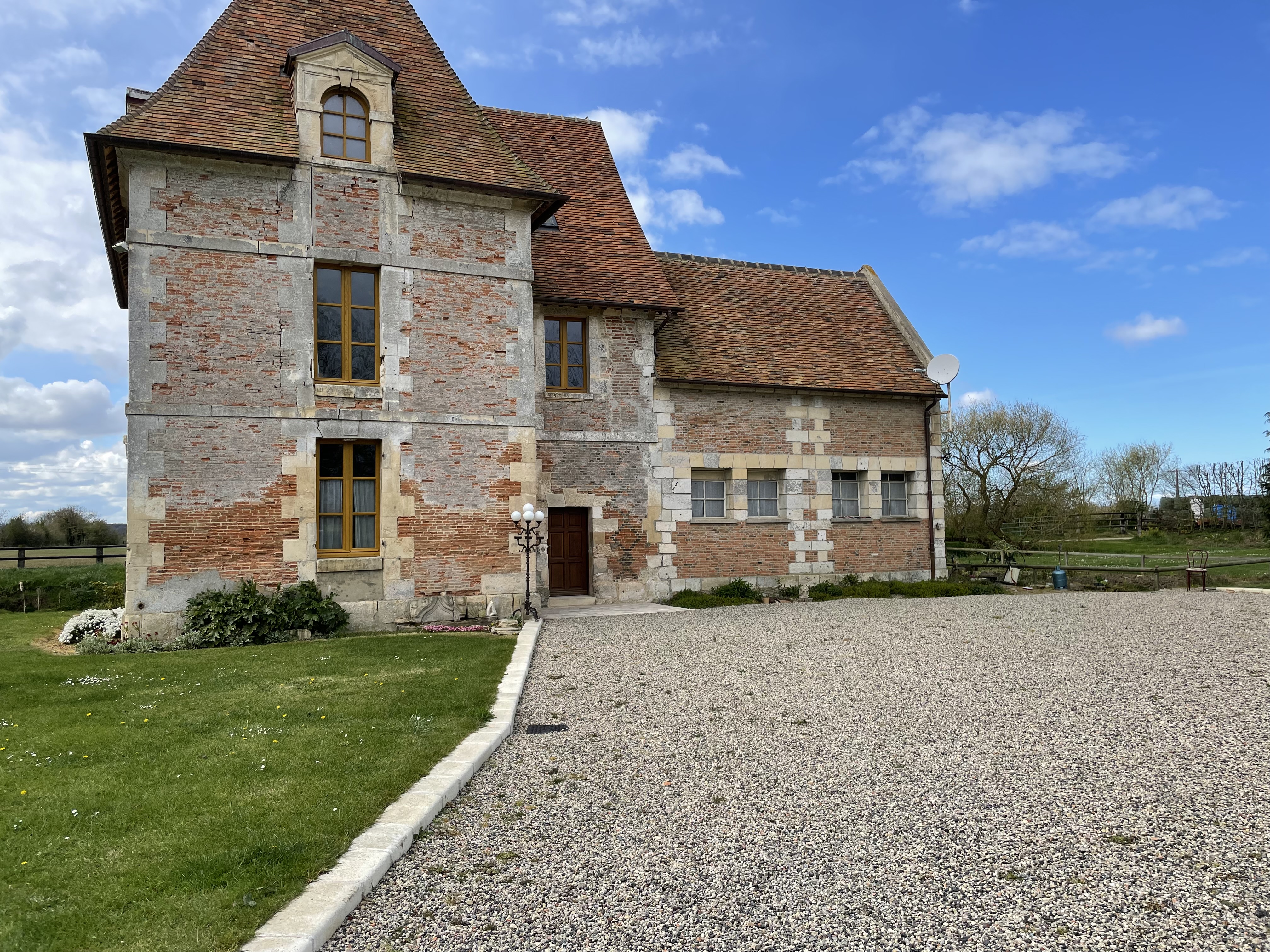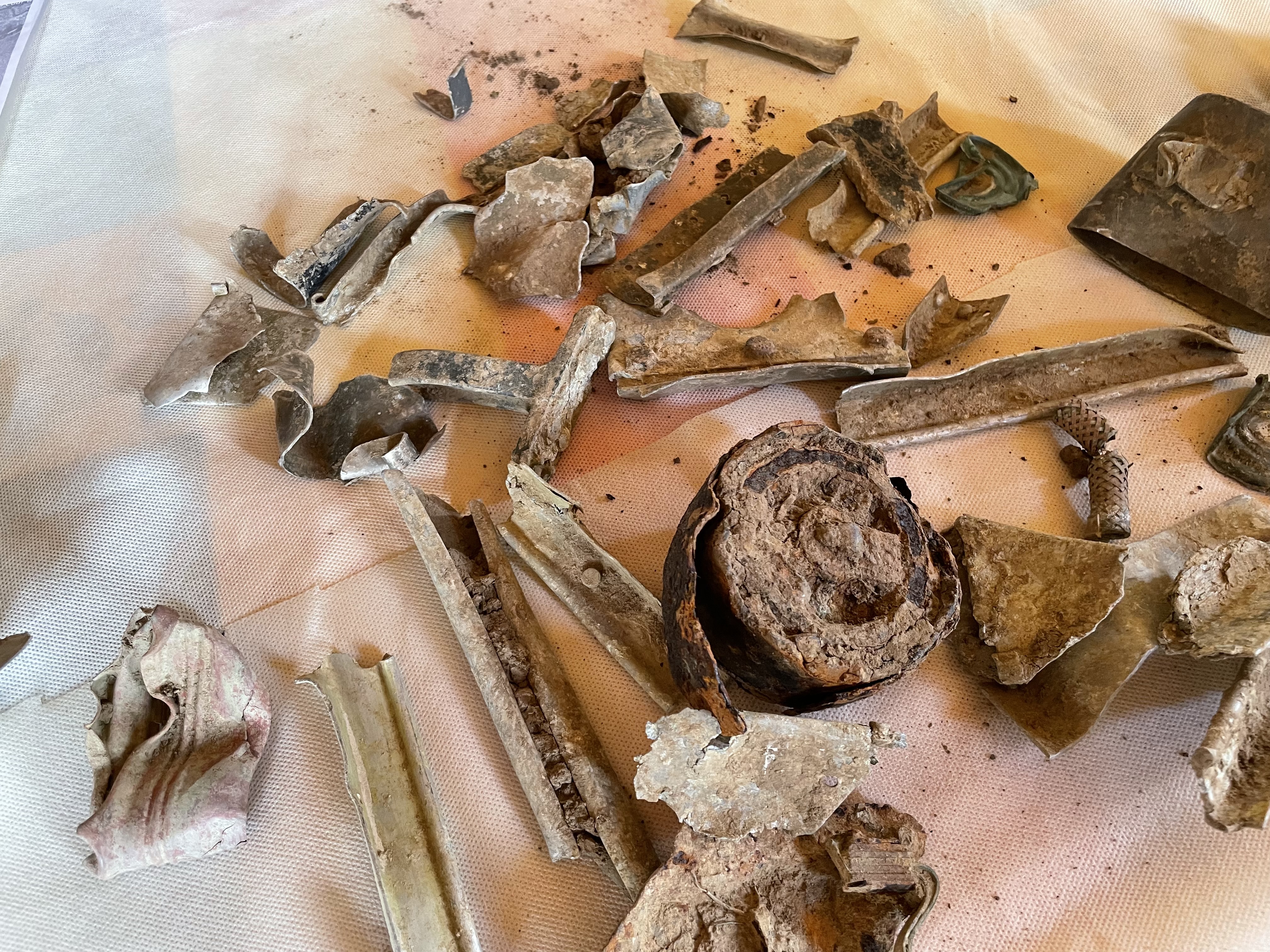It was an overcast day in early April when Montreal businessman Harvey Engelberg found himself in the middle of a muddy farmer’s field in northern France, reciting the Jewish memorial prayer for the dead.
Engelberg was repaying a 78-year old debt on behalf of his late father. Cobby Engelberg had served as an RCAF radio operator during the Second World War, and had nearly died in a crash into the same field on D-Day in 1944.
Harvey has been searching for years to find the location where the French people had saved his badly-wounded father. He had nearly given up.
“A month ago, I got a letter from France from a Madame Ferey, and in her letter, she says ‘I own a farm in Bassenville’, and then my head just exploded,’ said Engelberg, referring to the name of the town. ‘I wrote back saying, ‘Yes!’, and she said, ‘Well, we found bits of the plane crash on our property. Would you like them?”
Engelberg bought a ticket to France and arrived at the Ferey cattle farm on April 3, where three generations of the couple’s family were waiting to meet their Canadian visitor.
With a French television news crew along to document the emotional meeting, Engelberg sat down at the kitchen table of Therese Ferey and her husband Ghyslain. Forty-two pieces of the downed Dakota airplane were spread onto the tablecloth.
The Fereys had discovered the pieces over the years and kept them, just in case.
“We are happy, and I am happy that our children and grandchildren hear this story,” Therese Ferey told France 3. “We’ll be gone someday, and we are some of the last witnesses of the war between 1939 and 1945.”

Operation “Tonga” with the RCAF and RAF
The Fereys did not own this brick farmhouse or the fields at the time of Engelberg’s father’s accident. They bought it 45 years ago. The original rescuers were the Duhamels.
It was the Duhamels who heard the doomed Dakota droning overhead after midnight on June 6, 1944.
The plane was part of Operation Tonga, dropping Canadian, American and British paratroopers behind German lines near the beaches of Normandy, before the main invasion force was due to land at dawn. The commandos were to capture and destroy key bridges and roads, to prevent counterattacks.
The four crewmen aboard Cobby Engelberg’s Dakota KG 356, from the RAF’s #233 Squadron, left their base at Blakehill Farms for the secret mission. They were carrying equipment, plus 22-heavily armed British paratroopers. Their assigned drop zone was the farthest inland. The plane was soon hit by German flak and caught fire. The paratroopers were able to bail out, as did the navigator and the second pilot.
But Engelberg, the wireless radio operator, was injured and couldn’t jump out. So the pilot, Harvey Edgar Jones, from Niagara Falls, Ontario, chose to stay at the controls to keep the plane level and try to land.
Instead, he crashed. Jones was thrown from the cockpit and died.
Engelberg survived but was unconscious, lying under one of the wings. Local villagers rescued the Jewish Montrealer from the site, while the Dakota’s cargo of ammunition was still exploding. The Duhamel family hid him in their farm at Bassenville, until a passing Allied patrol eventually picked him up.

Engelberg only woke up ten days later, in a hospital in England, with no memory of the past two weeks.
After the war, Cobby and Mrs. Duhamel exchanged letters, and he learned that the farmers had been subsequently arrested by the Gestapo and interrogated. In retaliation for helping the wounded airman, and several others, the Duhamels’ 16-year-old son was executed.
Harvey Engelberg has not been able to trace the Duhamels.
The farm’s current owner Ghyslain Ferey found pieces of the plane, and more debris was discovered by their 90-year old next door neighbour, who clearly remembered the plane crash. So when small, weathered pieces of bent aluminium turned up during ploughing, they knew it had to come from that tragic night.
According to Canadian military historian Alex Fitzgerald-Black, who is executive director of the Juno Beach Centre Association in Canada, the Engelberg crew faced an enormous challenge on the night their plane was hit.
Fitzgerald-Black was visiting the Juno Beach Centre museum at nearby Courseulles-sur-Mer at the time of Harvey’s trip, and helped to arrange his itinerary to the Bassenville site.
“The Squadron, when they were being briefed on it in the days before D-Day, they felt it was a big honour to be given the furthest inland drop zone, because that presumably would put them at the greatest amount of risk, both crossing the coast and the flak that they would experience doing that, but also getting inland and then having to turn around and go back and they would have the longest distance to travel,” the historian explained.
The downed pilot, Harvey Jones, was quickly buried by the locals, and after the war, was re-interred at the main Commonwealth War Graves Commission cemetery at Ranville, about 12 kilometres to the west of the crash site. For his part, Cobby Engelberg spent about six months in hospital and then undergoing treatment and rehabilitation for a further year back in Canada. His head wounds kept him out of action for the remainder of the war.
Harvey said before his father enlisted, Cobby had been a Golden Gloves boxing champion in Montreal and was in top shape. But surviving not one, but two serious injuries during the war—including an earlier plane crash in Iceland they used to refer to as a “crackup”—changed Cobby permanently.
“To have gone through two crashes, two hours in the water there, a brain fracture, a concussion, amnesia: I would guess that the man that went into the war, came out of the war, I’d say, about seventy five per cent,” Harvey said, adding the his father died at the age of 58. “I’ll be honest. I’m sure all that stuff is related to whatever happened.”
When Cobby returned from the war, he swore he would pay tribute to the pilot who died – Harvey Jones. After Cobby married, he had two daughters and then a son. Harvey Engelberg, now 69, has long been aware of the story and the heavy debt his name carries.
“That’s why I’m here. It’s pure luck, I guess. He landed in a field close to a farm of people who wanted to save him. And then it is pure luck that he was evacuated the day before the Nazis came,” Harvey said.
The 42 pieces of the aircraft, and Engelberg’s father’s flight diary, and other wartime documents and his medals, have now been donated to the Juno Beach Centre, in France, where they will be put on display. The Montrealer decided to keep only his late father’s “dog-tags”, or ID tags.
He hopes the museum showing the pieces of the Dakota will prompt other local French families to come forward with any wartime souvenirs or remnants which they have been saving.
“I think it’s too important to be selfish about and keep,” Harvey said.

Deserved the Victoria Cross: historians
For historians like Alex Fitzgerald-Black, the pilot’s heroic sacrifice by choosing to stay at the controls of his burning plane, needs to be resurrected from obscurity and properly recognized by the Canadian military. He hopes news coverage of Harvey Engelberg’s French trip could spread awareness of the Jones story, and prompt the record to be changed.
Jones’ Squadron Leader had recommended him for the rare, prestigious Victoria Cross, which can be awarded posthumously. The paperwork went up to the British Air Ministry in London, but, according to Fitzgerald-Black, they decided that they could not endorse the award. The explanation? So many pilots sacrificed themselves that way in Bomber Command, it became considered not out of the ordinary.
In the end, Jones was given a “Mention in dispatches”, which came with a citation from the King, and a pin shaped like an oak leaf.
“I understand the decision making at the time. I do. But at the same time, it’s a real shame,” said Fitzgerald-Black. “We don’t remember the story of Harvey Edgar Jones, unfortunately. And that’s something, hopefully with this donation and this story, the Museum will work on correcting.”
Back at the Fereys’ farm, Harvey Engelberg and the French couple walked to the spot about a kilometre away from the farmhouse where his father’s plane went down. Prayers were said. Engelberg recited the memorial prayer for his father, and for others who had died in the area on D-Day. That included some of his father’s Jewish friends from Montreal who had served in the same Squadron, on the same mission.
Nathan Berger, 20, was also a wireless radio operator on a Dakota, taking paratroopers to their drop zone. All but one of the RCAF crew and the commandos on board his plane, died. Berger is buried at Ranville, too.
So is Alex Flexer, a paratrooper. He was in the 1st Canadian Parachute Battalion.
“I tried to say the Kaddish as best as I could because I was pretty sentimental and emotional,” Harvey told The CJN.
Therese Ferey also said a prayer for her family over the site, in French.
The reunion brought a form of closure to both families, who bonded over a wartime gesture of kindness and bravery from strangers to a young Jewish airman who nearly died trying to liberate France.
Author

Ellin is a journalist and author who has worked for CTV News, CBC News, The Canadian Press and JazzFM. She authored the book Double Threat: Canadian Jews, the Military and WWII (2019) and contributed to Northern Lights: A Canadian Jewish History (2020). Currently a resident of Richmond Hill, Ont., she is a fan of Outlander, gardening, birdwatching and the Toronto Maple Leafs. Contact her at [email protected].
View all posts








